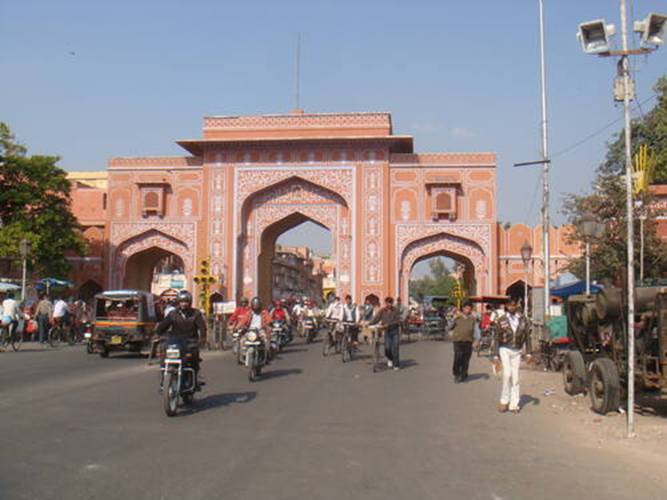
- Pink city and capital of Rajasthan Jaipur on July 6, 2019 got inscribed on the World Heritage List of UNESCO during the 43rd Session of the World Heritage Committee held at Baku, Azerbaijan.
- With Successful inscription of Jaipur City, India has 38 world heritage sites , that include 30 Cultural properties, 7 Natural properties and 1 mixed site.
- India’s nomination was initially recommended by the ICOMOS (advisory body of World Heritage (WH) Centre for cultural sites) as Deferral, but the 21 nation World Heritage Committee debated it and after discussion decided to inscribe it on the World Heritage list.
- The fortified city of Jaipur, in India’s northwestern state of Rajasthan was founded in 1727 by Sawai Jai Singh II. Unlike other cities in the region located in hilly terrain, Jaipur was established on the plain and built according to a grid plan interpreted in the light of Vedic architecture.
- According to the UNESCO, the City of Jaipur is an exceptional urban example in indigenous city planning and construction in South Asia. Unlike other medieval cities of the region, Jaipur was deliberately planned as a new city on the plains open for trade as opposed to hilly terrain and military cities of past, though its planning still ensured a response to the surrounding hill tops in all directions. The site selected within the valley that lay to the south of Amber hills was comparatively flat and unmarred by any previous construction. Besides an exemplary planning, its iconic monuments such as the Govind Dev temple, City Palace, Jantar Mantar and Hawa Mahal excel in artistic and architectural craftsmanship of the period. Jaipur is an expression of the astronomical skills, living traditions, unique urban form and exemplary foresighted city planning of an 18th century city from India.
- Jaipur is an exemplary development in town planning and architecture that demonstrates amalgamation and important interchange of several ideas over the late medieval period.
- With this, India now has 38 World Heritage Sites , that include 30 Cultural properties, 7 Natural properties and 1 mixed site.
India has following 38 UNESCO heritage sites.
- Cultural (30)
- Agra Fort (1983)
- Ajanta Caves (1983)
- Archaeological Site of Nalanda Mahavihara at Nalanda, Bihar (2016)
- Buddhist Monuments at Sanchi (1989)
- Champaner-Pavagadh Archaeological Park (2004)
- Chhatrapati Shivaji Terminus (formerly Victoria Terminus) (2004)
- Churches and Convents of Goa (1986)
- Elephanta Caves (1987)
- Ellora Caves (1983)
- Fatehpur Sikri (1986)
- Great Living Chola Temples (1987,2004)
- Group of Monuments at Hampi (1986)
- Group of Monuments at Mahabalipuram (1984)
- Group of Monuments at Pattadakal (1987)
- Hill Forts of Rajasthan (2013)
- Historic City of Ahmadabad (2017)
- Humayun’s Tomb, Delhi (1993)
- Khajuraho Group of Monuments (1986)
- Mahabodhi Temple Complex at Bodh Gaya (2002)
- Mountain Railways of India (1999,2005,2008)
- Qutb Minar and its Monuments, Delhi (1993)
- Rani-ki-Vav (the Queen’s Stepwell) at Patan, Gujarat (2014)
- Red Fort Complex (2007)
- Rock Shelters of Bhimbetka (2003)
- Sun Temple, Konârak (1984)
- Taj Mahal (1983)
- The Architectural Work of Le Corbusier, an Outstanding Contribution to the Modern Movement (2016)
- The Jantar Mantar, Jaipur (2010)
- Victorian Gothic and Art Deco Ensembles of Mumbai (2018)
- Pink city Jaipur (2019)
Natural (7)
- Great Himalayan National Park Conservation Area (2014)
- Kaziranga National Park (1985)
- Keoladeo National Park (1985)
- Manas Wildlife Sanctuary (1985)
- Nanda Devi and Valley of Flowers National Parks (1988,2005)
- Sundarbans National Park (1987)
- Western Ghats (2012)
Mixed (1)
- Khangchendzonga National Park (2016)


